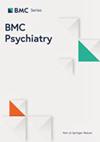Influencing factors of posttraumatic stress disorder in Shidu parents who have lost their only child: a cross-sectional survey
IF 3.4
2区 医学
Q2 PSYCHIATRY
引用次数: 0
Abstract
In China, parents who have lost their only child are referred to as Shidu parents (SDPs). This study aimed to investigate the prevalence and risk factors of post-traumatic stress disorder (PTSD) and investigate the influence of depressive and anxiety symptoms on the development of PTSD. Four hundred and thirty-six SDPs completed assessments of PTSD (Structured Clinical Interview for DSM-IV Disorders, SCID-IV; The Clinician-Administered PTSD Scale-IV, CAPS-IV), depression (Hamilton depression scale), and anxiety (Hamilton Anxiety Scale) via in-person interviews. Logistic regression and hierarchical multiple linear regression analyses were used to explore the association of demographic characteristics, depression, and anxiety symptoms with PTSD. The prevalence of PTSD in SDPs was 14.45%. The comorbidity of depression and anxiety symptoms was 87.30% in the SDPs with PTSD. The logistic regression model, which included factors of gender, age, education, depression, and anxiety, which contributed to the development of PTSD, was significant [χ² (11) = 122.47, p < 0.001]. The hierarchical multiple linear regression analysis indicated that female gender and the severity of comorbidities (depression and anxiety) were positively associated with the severity of PTSD. This study found that the severity of depression and anxiety was closely related to the severity of PTSD, supporting that SDPs are highly prone to the co-occurrence of PTSD, depression, and anxiety after bereavement. Our findings may provide more insights into the development of individualized interventions for parents who have experienced the loss of their only child.失去独生子女的十渡父母创伤后应激障碍的影响因素:横断面调查
在中国,失去独生子女的父母被称为 "师徒父母"(SDPs)。本研究旨在调查创伤后应激障碍(PTSD)的患病率和风险因素,并研究抑郁症状和焦虑症状对创伤后应激障碍发展的影响。四百三十六名 SDP 通过面谈完成了创伤后应激障碍(DSM-IV 疾病结构化临床访谈,SCID-IV;临床医师管理创伤后应激障碍量表-IV,CAPS-IV)、抑郁(汉密尔顿抑郁量表)和焦虑(汉密尔顿焦虑量表)的评估。采用逻辑回归和分层多元线性回归分析来探讨人口统计学特征、抑郁和焦虑症状与创伤后应激障碍的关系。创伤后应激障碍在校内流离失所者中的患病率为 14.45%。在患有创伤后应激障碍的社工中,抑郁和焦虑症状的合并率为 87.30%。包括性别、年龄、教育程度、抑郁和焦虑等导致创伤后应激障碍发生的因素在内的逻辑回归模型具有显著性[χ² (11) = 122.47, p < 0.001]。分层多元线性回归分析表明,女性性别和合并症(抑郁和焦虑)的严重程度与创伤后应激障碍的严重程度呈正相关。本研究发现,抑郁和焦虑的严重程度与创伤后应激障碍的严重程度密切相关,这证明了丧亲伤残者在丧亲后极易同时出现创伤后应激障碍、抑郁和焦虑。我们的研究结果可能会为那些经历过失去独生子女的父母提供更多的见解,帮助他们制定个性化的干预措施。
本文章由计算机程序翻译,如有差异,请以英文原文为准。
求助全文
约1分钟内获得全文
求助全文
来源期刊

BMC Psychiatry
医学-精神病学
CiteScore
5.90
自引率
4.50%
发文量
716
审稿时长
3-6 weeks
期刊介绍:
BMC Psychiatry is an open access, peer-reviewed journal that considers articles on all aspects of the prevention, diagnosis and management of psychiatric disorders, as well as related molecular genetics, pathophysiology, and epidemiology.
 求助内容:
求助内容: 应助结果提醒方式:
应助结果提醒方式:


